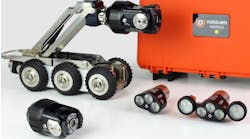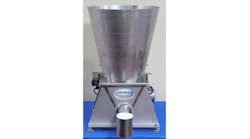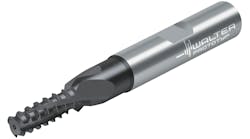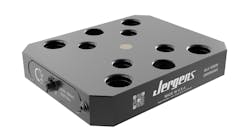Digital twins have become one of the hottest topics in manufacturing today because of their promise to improve innovation and design, visually enhance collaboration, and enable ongoing operation of connected products and assets — all in a fast-paced, digitally transforming, competitive environment for manufacturers.
Digital twins, or virtual representations, can be used to manage multiple aspects of a manufacturing business, including highly complex, customized products, and connected assets, such as manufacturing plants or facilities and the assets within them. Data and processes from multitier supply chains, service plans and execution, and the operating environment perpetually feed digital twins to ensure the most up-to-date view of the past, current, and future performance and condition of products, assets, facilities, and plants.
The emergence of digital twins has also been aided by growth of product innovation platforms as well as 3rd Platform technologies and innovation accelerators such as cloud, mobile, big data and analytics, social, cognitive analytics, and IoT. Visualization and simulation, much like CAD and product life-cycle management (PLM), were until recently mostly used in engineering or R&D workgroups, not the broader organization and certainly not by "non-engineers" or "non-R&D." But as PLM extends across and outside the organization to a product innovation platform and connects to manufacturing, operations, supply chains, and service, the question naturally arises, how do we best communicate across this complex set of processes and resources? And as products and assets, powered by IoT, are connected and it becomes possible to track performance and usage, how do we best collect, collate, simulate, and analyze data to ensure quality and an exceptional customer experience?
The answer to these questions is to visually enhance the content and data created by this extended collaboration and connectivity through digital twins across your enterprise and value chain.
What are digital twins?
As manufacturers continue to digitally transform and product, supply chain, and operation complexity reigns, manufacturers and plant owners are using "digital twins" to optimize product and asset quality and improve the customer and consumer experience. Digital twins, a term coined by the Defense Advanced Research Projects Agency (DARPA) decades ago and discussed frequently by PLM, manufacturing operations, and IoT vendors are (in short) rich, multilayered, virtual product, or asset, models. At their most base level, digital twins use 3D models and CAE (simulation software) to create a full, living, digital model of a product and its associated manufacturing processes, or assets, and their related environment.
Essentially, digital twins are the extended application of simulation and visualization throughout a digitally transformed organization, for better communication and collaboration. Digital twins are the virtual models of a product or asset, connected to the related physical instance via IoT that visually enhances data flow, communication, and collaboration across engineering, operations, supply chain, and service. There is no digital twin product you can buy, per se. Rather, it is a digital, 3D model built and managed by multiple technologies — CAD/CAM/CAE (CAx), visualization, IoT, analytics, machine learning, ALM, enterprise asset management (EAM) — and by multiple CAx, PLM, ERP, EAM, and manufacturing operations management vendors. You can also purchase basic 3D models from CAD marketplaces to get started on a lightweight digital twin, should you be looking to enable visualization or service monitoring.
Why are digital twins important?
There are multiple challenges that digital twins can help manufacturers mitigate today:
- Complexity: Increasing product, supply chain, and demand complexity mandates manufacturers manage risk and safety, improve product and asset performance, and maintain high levels of enterprise-wide quality.
- Ecosystems: Extending and broadening external networks of suppliers and partners, many of whom provide design and operations support.
- Global and local: Highly competitive global markets need to be served at a local level withunique requirements and capabilities.
- Customer experience: Closer collaboration with customers is needed for customized or individualized products across their life span.
- Data: Massive amounts of structured and unstructured data from IoT, extended supply chains, and multiple disparate manufacturing plants or facilities.
- Connected, "always on": Products and assets can be tracked throughout their life cycle, and customers expect high levels of quality and service because of this.
- Service revenue: This connectivity provides a challenge and opportunity for manufacturers to leverage connected asset and product data to ensure high levels of service, value-added services, and an increase in service revenue.
We think there are three big value propositions with digital twins for manufacturers:
A DVR and Time Machine for Learning and Predicting
Better visibility and decision support, closed-loop quality, clear communication and collaboration, and predictive analytics are the biggest strategic reasons why digital twins of products and assets are important to manufacturers today. Having this living, digital model with multiphysics, systems-level content that ties big data and analytics with statistical analytics from the product/asset or plant/facility floor improves communication and expedites action, leading to faster time to market; consistently high-quality products, processes, and operations; and proactive, predictive service. It also enables the ability to This is especially important today as manufacturers extend their way of working across technology and business domains, within the organization, and among ecosystems of partners.
Predictive and prescriptive analytics become possible as the digital twins of a product or asset grow in content richness through IoT, thereby enabling improved ongoing operations, maintenance, and service. This full picture of a product or asset with real-time and historical data, including its environment and related processes, enables rewinding and fast-forwarding of product and asset performance information to learn from past issues and predict and optimize future performance.
Achieving Business Outcomes Through IoT and the Visualization of Data and Analytics
With IDC forecasting 30 billion connected things by 2020, manufacturers are now faced with the blessing (to put an optimistic spin on it) of a constant stream of data from and about products, assets, and supply chains including customer insight, demand, social media, software, IoT, manufacturing facility/shop floor, supply chain, and commercialization (marketing, stores, and marketplaces). Once this data flows back to the manufacturer or plant owner, analytics can be applied for decision support. This data, although potentially overwhelming to manufacturers, is exactly the ingredient required to turn virtual models into digital twins.
Analytics streaming from product development, manufacturing, and service processes, however, will be useless if this information is not easily accessible and delivered in context. Providing a virtual representation, or digital twin, of a product or asset with connected product and process data layered within enables faster decision making that drives business outcomes, such as:
- Improved predictive maintenance
- Accurate analysis of asset and product design improvements
- Consistent service-level agreement compliance
- Shorter response time to changes in customer needs and demand
Enabling IT/OT Connection for a Real-Time, Holistic View
Digital twins can enable a real-time view of the operations of a business including production
processes, overall plant performance, and supply chain as the digital twin builds in fidelity. Digital twins that enable this IT/OT (operations technology) connection provide a view into facility information, quality metrics, the product and process model, condition monitoring and predictive maintenance, supply chain, and customer information. This combined with IT information from upstream design, planning, and development applications, systems, and processes provides a holistic view of a product or asset that can be represented in a digital twin.
Digital Twins a Key enabler of Digital Transformation
As manufacturers continue to digitally transform and move their business processes to an extended, open platform that functions inside and outside the company, between IT and OT processes, flexible, digital twins will become a critical tool for achieving consistent communication, collaboration, engagement, and operations across a digital thread that connects a varied, global team inside and outside the company.
The starting points for using digital twins of product and assets will differ by company size, industry, and need, but the value derived by all manufacturers will be similar — clarity of communication; rapid collaboration; holistic visibility; accurate, efficient response to demand; monetization of IoT data; predictive, proactive service; and closer collaboration with customers.
As Program Director, Product Innovation, Jeff leads IDC’s research and analysis of the PLM and collaborative innovation market, including topics such as the development of an innovation platform and the intersection of product design, development, and digital manufacturing.












